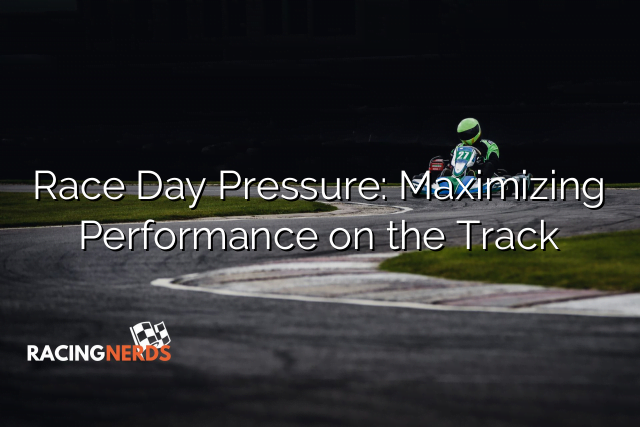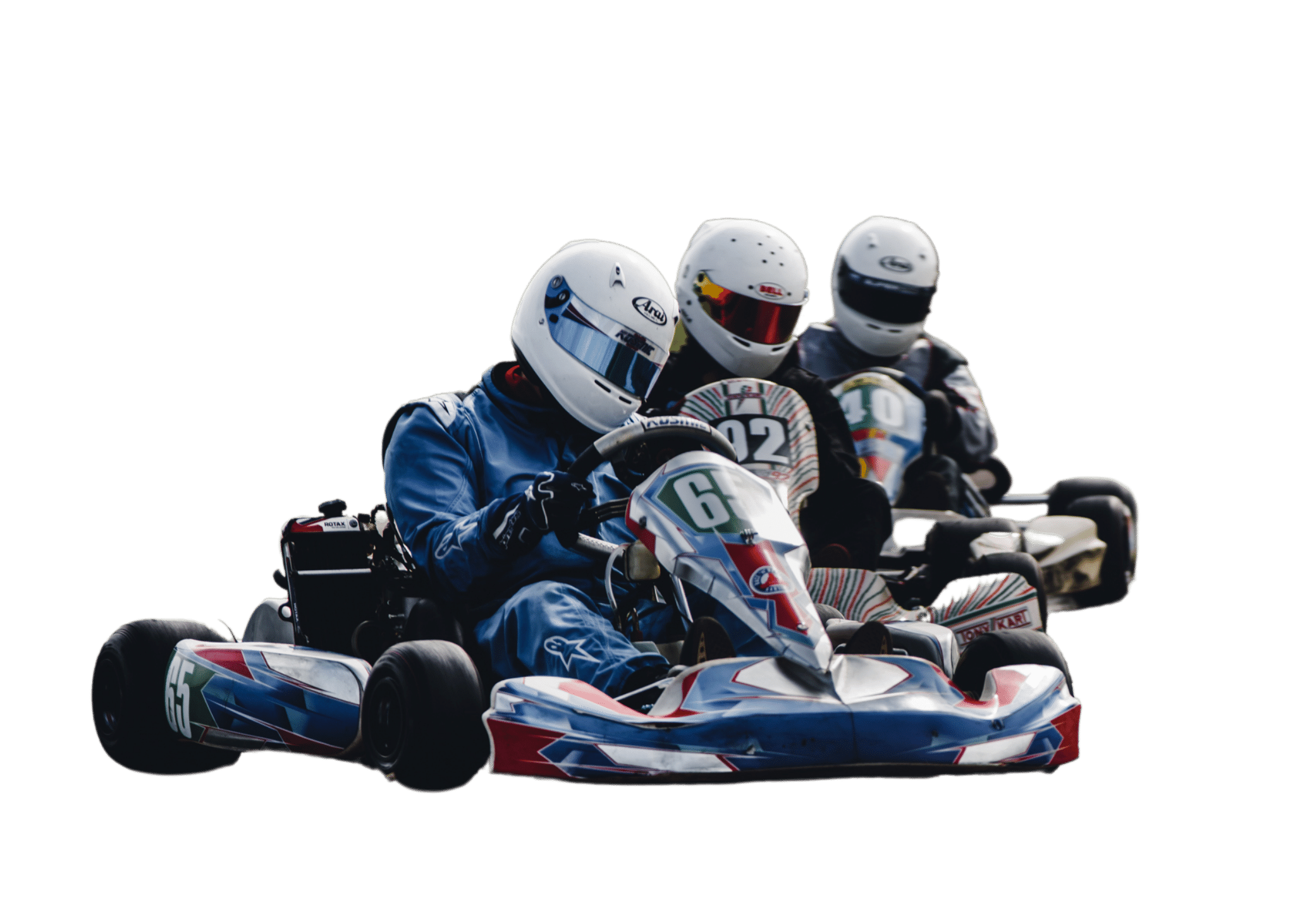
They say that when the rubber meets the road, the true character of a racer is revealed. You stand at the precipice of the ultimate test, where the culmination of your training, strategy, and mental fortitude is put to the sternest of trials.
Today, you’re not just racing against the others—you’re racing against the formidable adversary of pressure itself. It’s crucial that you recognize the signs of tension and channel them to sharpen your focus, rather than allowing them to erode your performance.
As you tighten your grip on the steering wheel and glance at your competitors, consider the fine line between success and the lessons etched in the wake of defeat. Keep in mind, the decisions you make over the next few laps could echo across the entirety of your racing legacy.
Stay with me, as we explore how you can transform the weight of race day pressure into the fuel that powers you past the checkered flag.
Grasping the complexities of race day dynamics requires a methodical approach to the unique pressures and evolving conditions that can significantly impact your performance on the track.
Managing pre-race nerves is critical; you must develop strategies to keep anxiety at bay and maintain focus. Deep breathing, visualization, and routine stretching can mitigate stress and sharpen your mental acuity.
Utilizing pre-race warm-up sessions allows you to acclimate to the track’s conditions, which may have evolved from practice day. These sessions are opportunities to refine your lines, adjust to the grip levels, and reinforce muscle memory.
Approaching the race with a meticulous mindset ensures you’re adapting to the day’s variables while preserving the precision of your driving technique.
While refining your lines during warm-up sessions sharpens mental acuity, consistently visualizing and hitting markers on the track is what truly cements your precision under race-day pressure. Improving focus on these markers enhances muscle memory, enabling you to execute turns and accelerations with methodical precision. It’s not just about seeing the marker; it’s about ingraining it into your very reflexes.
| Key Component | Role in Performance |
|---|---|
| Visualizing Markers | Improves focus |
| Hitting Markers | Enhances muscle memory |
| Precision | Reduces lap times |
| Mental Acuity | Increases consistency |
| Muscle Memory | Promotes automaticity |
Analyzing each marker’s impact on your performance allows for a systematic approach to racing. You’ll find that the more you practice this technique, the more instinctive your responses become, leading to a fluid, relentless pursuit of perfection.
As track conditions evolve throughout race day, you must adapt your strategy and kart setup to maintain optimal performance. The changing track conditions, influenced by temperature variations, rubber build-up, and the wear patterns of other racers, directly affect tire grip.
A methodical approach requires analyzing the grip levels at different sections of the track. If you’re experiencing understeer, you might need to increase the front tire pressure to gain more bite. Conversely, oversteer may call for a rear grip adjustment.
Be analytical in your response to these changes; don’t make hasty decisions based on a single lap. Track grip will fluctuate, and your ability to interpret these conditions and methodically tweak your kart setup is crucial for maximizing your race day potential.
Navigating the dynamic landscape of competition interactions requires a strategic mindset, as the behavior of fellow racers can significantly impact your performance on the track. By employing psychological strategies, you’ll stay poised amid the chaos.
Recognize the stressors and pivot your focus to the controllable aspects of your race. Analyze your opponents’ techniques, internalizing their strengths and noting vulnerabilities. This isn’t just about reaction—it’s about foresight and planning.
Through learning from competition, you discover new lines and approaches. Observe how competitors handle pressure; emulate their composure or exploit their weaknesses. Be methodical in your execution—this means deliberate practice in simulating race conditions and mental rehearsals of competition scenarios.
Ultimately, it’s a balanced blend of focus, adaptability, and tactical acumen that will give you the edge.
How can you transform the intense pressure of race day into a performance-enhancing tool?
By utilizing adrenaline, you can sharpen your focus and reflexes, transforming nerves into an asset. The surge of adrenaline, if harnessed correctly, doesn’t have to be your downfall; it can actually quicken your reaction times and boost your overall performance.
Embracing competition is another key element. Rather than viewing your competitors as threats, consider them as catalysts for your best performance. Analyze their strengths and let the desire to excel drive you.
Be methodical in your approach: use pressure to fuel your concentration, ensuring that you hit your markers consistently. By doing so, you’ll maintain optimal lap times and use pressure to your advantage.
To maximize your performance on race day, it’s essential to fine-tune your kart setup to account for the evolving conditions of the track. Kart setup optimization isn’t just about comfort; it’s a methodical process aimed at maximizing performance potential.
You’ll need to analyze data from practice runs, considering factors such as tire wear, fuel load, and temperature changes. Adjusting axle stiffness, seat positioning, or lead ballast can profoundly impact handling and grip levels.
Each change should be deliberate, aimed at reducing lap times while maintaining drivability under pressure. Remember, a well-optimized kart becomes an extension of you on the track, translating your skills into peak performance.
Always be ready to make strategic adjustments; that’s where races are won or lost.
Cultivating a winning mindset involves anchoring your focus on the mental game, as it’s just as critical as the physical aspects of racing. You must deploy mental preparation strategies rigorously.
This entails methodically analyzing your own performance, understanding the nuances of the track, and recognizing the impact of pressure on your driving. Utilizing visualization techniques, imagine yourself executing perfect turns and maintaining optimal speed through each section of the circuit. Envisioning success plants the seeds of belief necessary for peak performance.
Poor sleep affects your focus and reaction times due to disrupted circadian rhythms, impacting your ability to handle stress and make quick decisions, which is critical for peak performance under pressure.
You’ll find that proper nutrition, including hydration strategies and supplement timing, is crucial for maintaining your focus and energy levels during a race, ensuring you stay sharp and perform at your best.
You’ll boost a young driver’s confidence by balancing parental expectations with positive coaching dynamics, methodically fostering mental health through supportive strategies rather than pressure-packed demands.
You can reduce pre-race nerves by practicing mindfulness meditation and visualization techniques, methodically picturing each turn and breath to create a calm, focused mind before you hit the track.
You must adapt to weather changes by tweaking tire strategy for optimal grip and making aerodynamic adjustments to maintain control. Methodically analyze conditions to ensure your performance isn’t compromised by the elements.
In the end, race day isn’t for the faint-hearted or those who buckle under a little pressure. It’s for gladiators in helmets, those who eat apexes for breakfast and spit out lap times for lunch.
So, adjust that rear spoiler, tighten your grip, and maybe—just maybe—you’ll avoid being the one watching taillights at the finish line.
Because in this high-octane ballet, second place is just the first loser. Keep your foot down and your head high.

